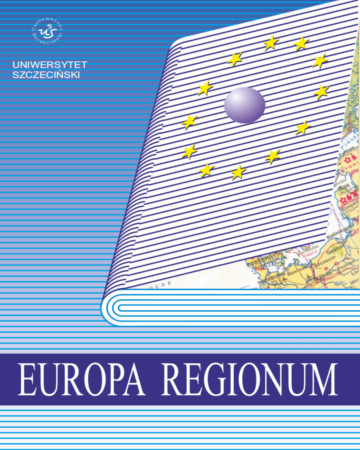
ISSN: 1428-278X
OAI
DOI: 10.18276/er.2017.32-10


Issue archive /
t. 32 2017
Pojazdy elektryczne jako rozproszone magazyny energii - potencjał magazynowania energii w kontekście rozwoju elektromobilności
(Electric Vehicles as a Distributed Energy Storage Systems – the Potential of an Energy Storage in the Electromobility Context)
| Authors: | Mateusz Wiślański |
| Keywords: | energy storage energy management smart grid vehcile to grid electromobility |
| Data publikacji całości: | 2017 |
| Page range: | 13 (133-145) |
| Klasyfikacja JEL: | O32 |
Abstract
This paper presents the challenges that Polish and global energy sector faces in terms of a future electromobility development. As a result of global electric vehicles market growth, there is an obvious need to increase the power generation capabilities along with improving grid’s flexibility in order to allow a smooth transition from internal combustion engine cars to electric ones. Creating a balanced electric power system relies not only on increasing the power generation capabilities but as well on important factor of energy storage. Energy storage is one of the biggest challenges for global economics. Nowadays most of the energy is stored in hydroelectric systems (dams, pumped storage, run-of-the-river) which are characterized by major technical and legal restrictions. On the other hand there are chemical storage systems which are fairly easy to use and have less restrictions, however till today they had poor performance therefore did not find its way into the grid applications. However recent development in electric vehicles market brought a rapid technology development in terms of chemical energy storage systems. The above mentioned facts brings to reflect on the usage of energy storage systems in order to integrate electric vehicles in energy sector seamlessly. In the following paper the special emphasis has been put on:
Mass-scale energy storage systems deployment as a grid load optimization system including:
- vehicle to Grid in peak hours,
- night charging - oversupply elemination,
- renewable energy storage using electric vehicles.EVs charging scheduling - influence on price formation,
- limiting the investment needs through the distributed energy storage systems,
- car-sharing and car lease as a part of grid infrastructure.
Download file
Article file
Bibliography
| 1. | International Electrotechnical Commission (2011). Electical Energy Storage. Pobrane z: http://www.iec.ch/whitepaper/pdf/iecWP-energystorage-LR-en.pdf (1.06.2017). |
| 2. | Kempton, W. (2004). Vehicle-to-grid power implementation: From stabilizing the grid to supporting large-scale renewable energy. Pobrane z: http://assets.fiercemarkets.net/public/smartgridnews/V2G-Implementation_Kempton_Dec_2004.pdf (1.06.2017). |
| 3. | Kempton, W. (2001). Vehicle-to-Grid Power: Battery, Hybrid, and Fuel Cell Vehicles as Resources for Distributed Electric Power in California. Pobrane z: http://www1.udel.edu/V2G/docs/V2G-Cal-2001.pdf (1.06.2017). |
| 4. | Lazard (2015) Lazard’s levelized cost of storage analysis. Pobrane z: https://www.lazard.com/media/2391/lazards-levelized-cost-of-storage-analysis-10.pdf (1.06.2017). |
| 5. | Mapels, BA. (2010). The Use of Plug-in Hybrid Electric Vehicles For Peak shaving. Pobrane z: http://scholar.colorado.edu/cgi/viewcontent.cgi?article=1014&context=mcen_gradetds (1.06.2017). |
| 6. | Number of vehicles registered in United States from 1990 to 2015. Pobrane z: www.statista.com (1.06.2017). |
| 7. | Parks, K. (2007). Costs and Emissions Associated with Plug-In Hybrid Electric Vehicle Charging in the Xcel Energy Colorado Service Territory. Pobrane z: http://www.altomelbilen.dk/rapporter/El vehicles and hybrids study.pdf (20.06.2017). |
| 8. | Solar cell central Pobrane z: http://solarcellcentral.com/cost_page.html (3.06.2017). |
| 9. | U.S. Energy Information Administration (2017). Average Price of Electricity to Ultimate Customers by End-Use Sector. Pobrane z: https://www.eia.gov/electricity/monthly/epm_table_grapher.php?t=epmt_5_6_a (17.06.2017). |
| 10. | U.S. Energy Information Administration (2015) Existing Capacity by Energy Source. Pobrane z: https://www.eia.gov/electricity/annual/html/epa_04_03.html (20.06.2017). |
| 11. | Wirth, H. (2017). Recent Facts about Photovoltaics in Germany, Fraunhofer ISE. Pobrane z: https://www.ise.fraunhofer.de/ (28.06.2017). |